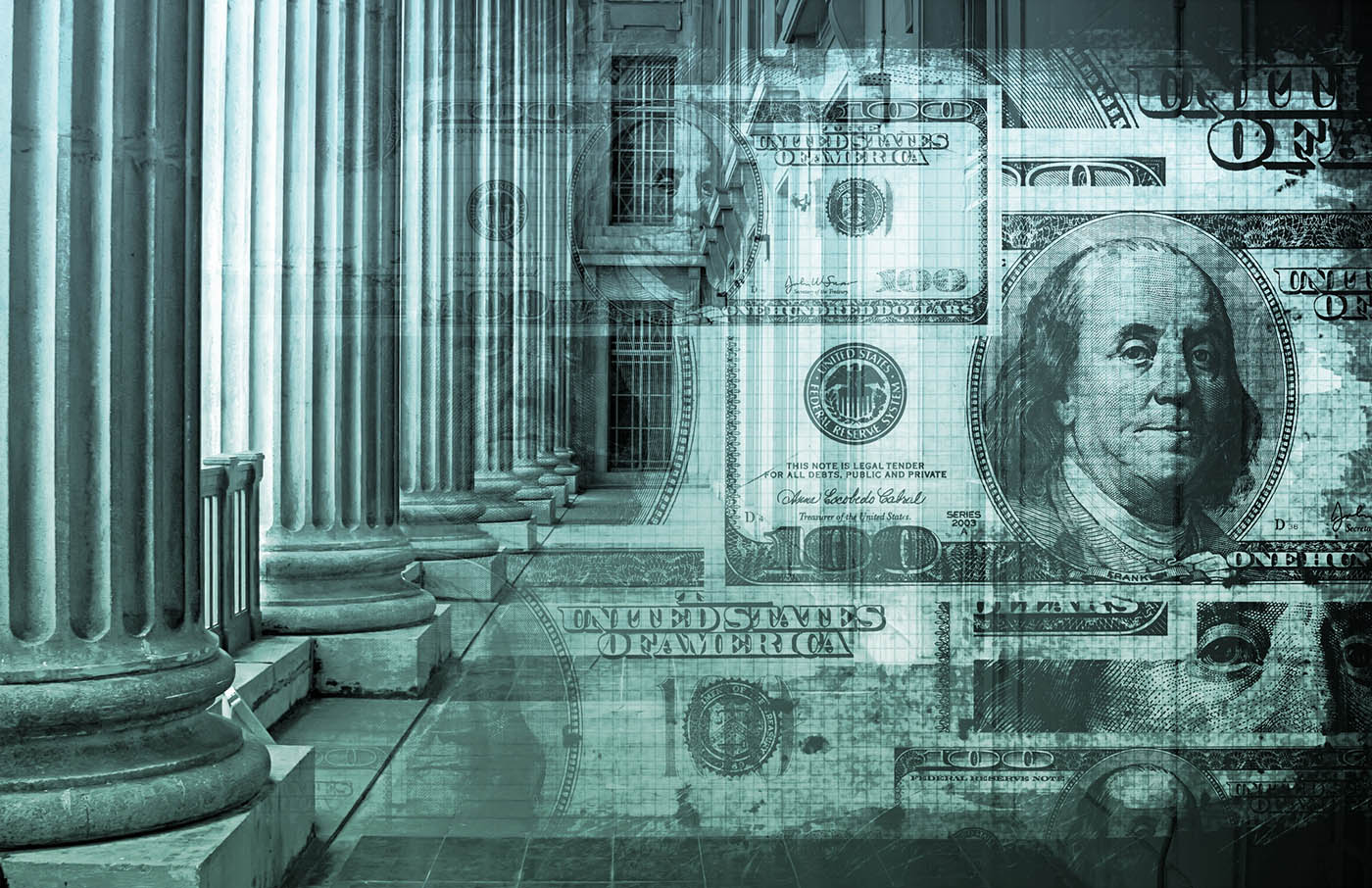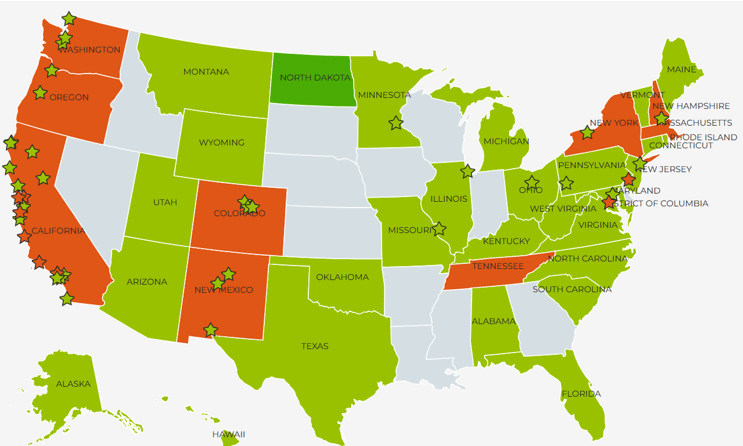
Banking crises bring reactions both regulatory – to ensure financial stability and prevent recurrences – and attitudinal. A recent multi-country historical study by Cornell University’s Matthew Baron and two co-authors concluded that the biggest banks, despite outsize risk exposures and losses, “typically gain market share in crises, as small banks fail more often or are absorbed, making the largest banks even more dominant after crises.”
Regional and smaller, community-oriented institutions’ presumably stable balance sheets don’t necessarily bring them more business. Deposits may flow toward “too big to fail” safety or, in another type of backlash, individuals try alternatives such as bitcoin, which was introduced during the 2008 global crisis.
The ebbs and flows of public confidence at times raise interest in public banks – owned by governments and promising to make loans and retain profits for local benefit. The idea rankles the banking establishment, and even in the aftermath of the 2023 bank failures, public banking advocacy remained muted, at least in terms of media attention. But there is a movement behind it that is years in the making; the Public Banking Institute supports and tracks active campaigns in several states (see map below).
There is one precedent in the U.S.: the Bank of North Dakota, founded by that state in 1919 initially to sustain the agricultural sector and reduce its dependence on Minneapolis- and Chicago-based banks. BND today is a diversified lender that operates “just as though we were a financial institution in the private sector,” said its annual report for 2022, when it reported net income of $191 million on $10.2 billion in assets. Although it provides some retail services to North Dakota residents, BND does not compete with credit cards, debit cards and online bill payments, and a portion of its portfolio involves administration of “legislative-directed” off-balance-sheet programs.

An interactive map at the Public Banking Institute website shows active campaigns in red and local public banking groups in light green. The state-owned Bank of North Dakota is represented in dark green.
Public banks are established for various purposes in other countries. They were the subject of a 2022 International Monetary Fund event and a paper, Regulating, Supervising, and Handling Distress in Public Banks, which noted that “during the COVID-19 pandemic, many governments relied on public banks to boost credit to households and firms . . . Effective management and oversight of public banks to ensure their positive contribution to financial stability and economic growth is therefore a forward-looking imperative.”
Promoting Financial Inclusion
In New York, which saw the $110 billion-in-assets Signature Bank fail last March, James Parrott and Michele Mattingly of the New School’s Center for New York City Affairs said a city-owned bank would be a boon to local businesses and housing affordability. As reported by the Gothamist news site, they envisioned a public bank boosting the economy through loans to credit unions and Community Development Financial Institutions (CDFIs).
Authorizing legislation, which had not been passed in the state capital of Albany, was backed by City Comptroller Brad Lander, who said it would enable CDFIs “to dramatically expand their footprint and provide basic high-quality banking services to the 780,000 New York families who remain unbanked or underbanked.”
Melissa Marquez, a credit union CEO supporting formation of a public bank in Rochester, New York, told National Public Radio’s Planet Money in September that the idea is to keep money circulating locally: “to stretch and take risks that banks aren’t comfortable making. So money – local money and the people’s money – needs to get put into those gas tanks.”
After a number of fits and starts, Los Angeles’ City Council in July approved funding for a private bank feasibility study, with hopes for more minority-group financial inclusion.
In 2020, progressive Democrats in the U.S. House, including Representative Alexandria Ocasio-Cortez of New York, proposed a Public Banking Act to facilitate such moves by states and municipalities.
Jesse Van Tol
“The idea’s spread is directly connected to its potential benefits to taxpayers and communities,” Jesse Van Tol, president and CEO of the National Community Reinvestment Coalition (NCRC), explained in an interview. “If cities and states can leverage their own deposit dollars to generate fresh revenues, interest and investment income could instead stay in the public’s hands and fund community-driven local development and other public services.”
The CDFI Fund
The U.S. Treasury’s Community Development Financial Institutions Fund, according to its website, was established by legislation in 1994 “to promote economic revitalization and community development in low-income communities through investment in and assistance” to certified CDFIs, which can be banks, credit unions, loan funds, microloan funds and venture capital providers.
The CDFI program, which in 2021 played a part in the federal COVID-19 stimulus effort, is “a public-private partnership, and I feel it is absolutely making a difference,” said analyst Christopher Marinac, director of research at Janney Montgomery Scott.
The 2021 CDFI response “provided unique preferred equity financing” at 0% for 24 months and a 2% perpetual rate thereafter. That clearly benefits bank balance sheets and “fits well into the overall public bank theme,” Marinac observed.
There are hurdles to be cleared in opening a public bank, Van Tol pointed out: “The bank would need to be chartered, which in some cases may require state legislative action. There would need to be some federal recognition of their charters,” and they would have to obtain Federal Deposit Insurance Corp. coverage.
Banks’ Defense
In opposing public bank authorization, established banks will argue that the unbanked population has been declining over time, that they comply with Community Reinvestment Act requirements and have taken steps in recent years to lower or eliminate fees for overdrafts, which are more costly than other consumer credit products and fall hardest on lower-income customers. (A recent Consumer Financial Protection Bureau survey found that 34% of households below $65,000 in annual income were charged overdraft or non-sufficient funds fees.)
The banks participate in the Office of the Comptroller of the Currency’s Project REACh financial inclusion program and partner with minority depository institutions and CDFIs.
Hundreds of banks participate in the Bank On account-affordability program. Pew Charitable Trusts in January 2023 said that “thanks in part to changes in federal regulations to help consumers,” six of the eight largest U.S. banks, ranked by their number of branches, “offered small installment loans or lines of credit to checking account customers with low or no credit scores.”
Bank of America is the largest private-sector investor in CDFIs, Chairman and CEO Brian Moynihan told the Senate Banking Committee on December 6, 2023. “By funding CDFIs, we help make it possible for credit to flow to needs we might otherwise not reach through direct lending.
“Our portfolio exceeds $2 billion in loans, deposits, capital grants and equity investments in more than 250 CDFI partners in the U.S.,” Moynihan testified. “Of our CDFI financing, 40% is for affordable housing activities, 30% funds community facilities (e.g., health clinics, charter schools, child-care facilities), 25% funds small business loans, and 5% is for other miscellaneous uses.”
Senator Brown Pushes Back
At that December oversight hearing, Banking Committee Chair Sherrod Brown admonished Moynihan and seven other top U.S. bank CEOs for aggressively lobbying against proposed Basel III Endgame capital requirements that they say would make loans more scarce.
“Absolutely nothing in these rules would stop your banks from making loans to working families and small businesses,” the Ohio Democrat asserted. “We’ve been seeing less and less productive banking activity for years [because] it doesn’t make your banks as much money as the risky stuff. You would rather fund risky trading and derivatives bets than boring, bread-and-butter small-business lending.”
When the pandemic struck in 2020, Brown proposed creating a “public banking option” via free “FedAccounts.” The idea was outlined in a 2018 paper on Central Banking for All by Morgan Ricks of Vanderbilt University Law School and two-co-authors, as noted in a March 2023 Yahoo News article, What If Every American Had the Same Federal Reserve Perks as Banks?.
Public banking principles, at least in terms of service delivery, could be advanced through the U.S. Postal Service branch network – which was specified in Brown’s ultimately unsuccessful bill. However, a postal banking pilot generated little interest, Nicholas Anthony of the Cato Institute noted in a March 2022 blog.
Fiscal Exposure
Steven Kelly, associate director of research with the Yale School of Management’s Program on Financial Stability (YPFS), cautions about “infusing public policy into what you’re hoping will be a for-profit entity.” That raises the specter of lagging profits that have to be fiscally subsidized, or in an extreme case necessitating a bailout.
Steven Kelly
“Infusing the economy with credit risks to avoid fiscal budget impact is a gimmick,” Kelly maintained. “Say you want to provide subsidized home ownership – not suggesting that’s good or bad. You can give someone a subsidized loan, which shackles them with credit and the government with a shadow fiscal exposure because the loan is not priced correctly.”
Better “to effectively provide that same person with down-payment money,” Kelly went on. “Now they have a loan less likely to go underwater, still have the lower rate because they have a sizable down payment into the private loan, and the government economic exposure is virtually unchanged.”
The case is clear in student debt, where defaults weigh on credit scores and limit economic activity – “while also being a direct fiscal transfer anyways because of the government guarantee.”
Van Tol maintains that if public banks intermediated municipal government deposits, cities would not be bearing costs paid to private-sector banks. They could potentially refinance debt at lower rates and leverage public dollars more efficiently.
“Take the Paycheck Protection Program as one example,” the community investment advocate said. “An exceptional circumstance led to an exceptional policy measure, which was then manipulated by private banks and lenders to their own benefit. A robust public banking system that could have filled that function would likely have made PPP more efficient and effective at supporting the U.S. economy” through the COVID crisis.
Topics: Conduct & Ethics